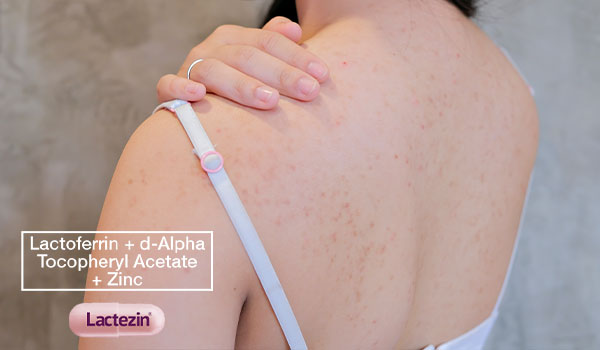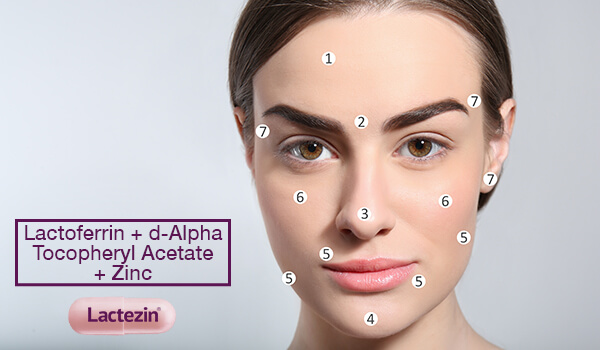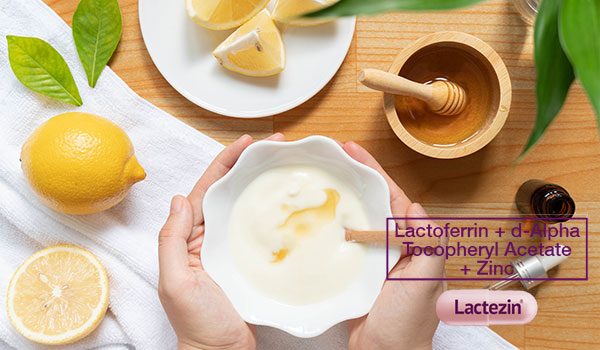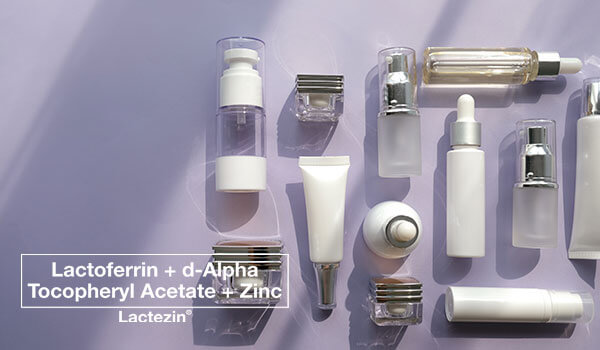Acne on Body: How to Prevent Breakouts in Unusual Spots

While we are all well-versed on facial pimples and breakouts, acne on body is a topic we aren’t all familiar with. But hey, it happens to the best of us. So here are 4 unusual acne on body spots and ways to prevent them.
Back Acne also known as “Bacne”
Bacne is totally normal, and a lot more common than you might think! It’s the most popular form of acne on the body besides those that break out from your face. There are two main reasons why it occurs.
First, our backs are filled with hair follicles that regularly get sweaty, something to take note of when you live in the tropics like the Philippines. Sweat buildup then leads to clogged pores, and when paired with product buildup from body lotions and the like, bacne occurs.
Second, clothes are a huge factor when it comes to bacne formation. Clothing that is too tight and those that are made from non-breathable material like nylon and polyester will cause this to happen. Strong laundry detergents that contain heavy fragrances that can also clog and aggravate the follicles.
What to do: A mild salicylic acid cleanser together with a gentle-bristled scrub brush can help fight little red bumps and blackheads. However, make sure you don’t scrub on any big, inflamed bacne as doing so will just spread the bacteria and make it worse. If you regularly exercise and you can’t help but wear skin-fitting gym clothes, then make sure they have sweat and moisture-wicking properties so they don’t trap the sweat on your back. Otherwise, change clothes immediately after your workout.
Buttocks
Folliculitis is what causes acne to form on the buttocks. These bumps look almost the same as regular acne; they’re red, filled with pus, and feel itchy and irritating. It occurs when the staph bacteria infects a hair follicle. Normally, this form of bacteria lives on the skin without any major
problems, but when they get inside through a break, it results in infection. It can sometimes even lead to a more painful boil.
This is usually a result of tight-fitting clothes which gets in the way of the skin’s natural exfoliating process and leads to sweat build-up. Regularly occurring sweat from poor hygiene and a sedentary lifestyle (sitting for long hours in one place) can also create a breeding ground for bacteria.
What to do: Take a break from spandex and skinny jeans. Opt for comfy underwear that is made out of natural, breathable fabrics like cotton. Also avoid sitting in one place for too long. Not only will this help the pores in your derriere breathe, it will also improve blood and air circulation in your body. After all that, use a granular-based exfoliant in the shower. This will decongest pores, smoothen out bumps, and help prevent future breakouts.
Scalp and hairline
While acne is less likely to form on the scalp than on the face, they can just be as bothersome. And since your hair hides the zits well, (especially if you have thick and coarse hair) you might not even be aware of its existence until you run a comb over it, which can be painful.
Similar to the acne on your face, the acne that forms on the scalp is due to overactive sebaceous glands. A regular hair care routine, like shampooing and blow drying can further irritate the zit, making it a lot more painful than it needs to be. Poor hygiene after a workout can also result in clogged pores along the hairline. Plus, wearing any type of headgear while sweating heightens the risk for scalp acne.
What to do: Swap your regular shampoos to a medicated one with a scalp treatment. These products can be bought without a prescription and can wash away any excess oil and debris, preventing any future acne from forming in the first place. They regularly contain ingredients like glycolic acid that can help exfoliate the scalp and ketoconazole, which is an antifungal agent that alleviates scaly or red skin.
Vaginal area
Vaginal pimples aren't considered to be a serious condition, but they can be a great source of soreness and irritation. They are usually caused by contact dermatitis, which is the sensitivity or reaction to something that touches the skin. Most popular culprits are heavily scented bubble baths and soaps, feminine wipes, sanitary pads and tampons, condoms, and laundry detergent.
It may also be a result of shaving. Folliculitis happens when the hair starts growing out of the follicle and curls back towards the skin, causing irritation. This occurrence is more commonly known as ingrown hair.
What to do: Because this is a sensitive area, it’s best to not go in blind and pop the breakout. The easiest solution is to avoid coming into contact with the above mentioned irritants. Also avoid tight-fitting clothing and underwear that can cause friction. Also, get rid of your razor and instead trim your pubic hair with small shears. But if you really need to go bare, make sure to do so with light, gentle strokes, and shave in the direction the hair grows.
Try Lactoferrin + d-Alpha Tocopheryl Acetate + Zinc (Lactezin) to help prevent acne on your body!
Oral supplements like Lactoferrin + d-Alpha Tocopheryl Acetate + Zinc (Lactezin) have oil-regulating properties that can help fight pimple-causing bacteria, lessen pimples and improve skin appearance with regular intake.
Lactoferrin + d-Alpha Tocopheryl Acetate + Zinc is the generic name of Lactezin. If symptoms persist, consult your doctor.
If you want to know more about the most common types of acne, click here.
SOURCES:
http://info.gotbeauty.com/blog/5-reasons-why-youre-breaking-out-in-weird-places
https://www.healthline.com/health/womens-health/vaginal-pimples


